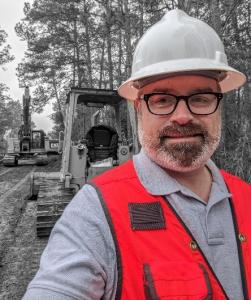Five of top 13 States for Biogas Potential in the Southeast
— Gus Simmons, Director of Bioenergy for Cavanaugh & Associates
PENN VALLEY, PA, US, July 19, 2023/EINPresswire.com/ — With five of the top 13 states for potential biogas production located in the southeastern U.S., it makes sense Gus Simmons is a man on the move.
Chief Innovation Officer and Director of Bioenergy for Cavanaugh & Associates, Simmons is point man for the North Carolina-based consulting/development firm’s growing portfolio of biogas-centered projects.
With biogas/renewable natural gas (RNG) the talk of the energy industry worldwide, projects in the Southeast, U.S. particularly manure-derived projects, are gaining interest and moving from drawing board to construction.
“There are just a lot of projects, still many manure-derived biogas projects in the pipeline,” Simmons said.
Simmons is one of numerous biogas experts scheduled to present at the Southeast RNG Conference 2023, a day-long program produced by Shale Directories and the H2-CCS Network, on Oct. 4, at the Hilton Charlotte Airport.
Today, manure means money when it comes to sourcing RNG. And in the southeastern portion of the country, potential biogas production is led by North Carolina (third), Georgia (fourth), Arkansas (10th), Alabama (11th), and Florida (13th).
Total potential methane production from the five states: 236 billion cubic feet annually. Simmons said the average cost of ag-based biogas production facilities is between $10 million and $75 million.
“The Southeast has a lot of underused organics, a lot of swine, poultry and dairy production, with capturing the methane from the manure becoming more and more important,” according to Simmons, who has been referred by some in the industry as the “Swine-gas King.”
The Southeast is a major livestock industry player, with Georgia, North Carolina and Arkansas ranked one, two, three in U.S. poultry production. North Carolina is ranked third in the nation in hogs and pigs’ inventory, and Six Southeast states (Florida, Arkansas, Alabama, Georgia, Mississippi, and Louisiana) are ranked in the nation’s Top 25 states in the number of beef cattle.
While federal and some states’ pro-biogas regulations and laws are known to positively impact projects, Simmons said the biggest driver of biogas production, including new projects, is the economy’s transportation sector.
“The low-carbon fuels market is rapidly expanding and biogas fits the need for a replacement for fossil fuels,” Simmons said.
The use of biogas is a direction many utilities have been following for years. Behemoth Southeast power producers, including Southern Co. and Duke Energy, both have announced plans to sharply reduce, if not eliminate, all emissions. Local and state governments are helping said push.
Methane generated by the natural decomposition of organics, such as animal manure and crop residues, is additive to the greenhouse gases in the atmosphere. Methane is recognized to be a potent greenhouse gas with warming potential 25–34 times greater than carbon dioxide, according to University of Utah data. Avoidance of methane emissions coupled with the use of that methane instead of fossil fuels actually gives RNG a “negative” carbon intensity – meaning it is not only emissions neutral, but also negates the additive emissions impact of traditional fuels.RNG also provides benefits in terms of fuel security, improved local air quality, and brings communities into the climate change fight all with local economic benefits: jobs.
Simmons said the biggest financial obstacle to new biogas projects is often pipeline interconnect costs. Simmons noted “the cost of perceived risk to transporters based on RNG quality” has increased costs for construction of interconnect equipment, monitoring, and testing.
Sources:
USDA Energy Potential from Livestock and Poultry Waste in the South https://naldc.nal.usda.gov/catalog/CAT87202243
The University of Utah: Methane Emissions Falling But Leaking. https://attheu.utah.edu/facultystaff/uinta-basin-methane/
Joe Barone
Shale Directories
+1 610-764-1232
[email protected]
![]()
Originally published at https://www.einpresswire.com/article/644846275/swine-rng-expert-to-present-at-southeast-rng-conference



